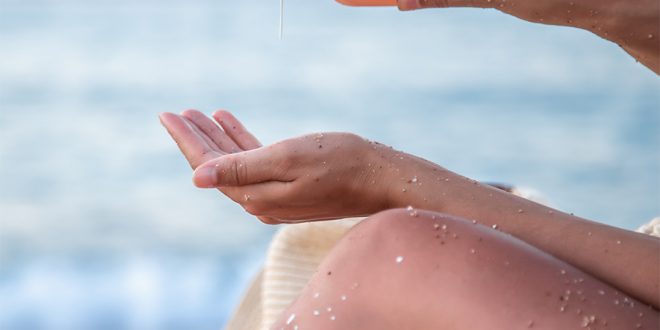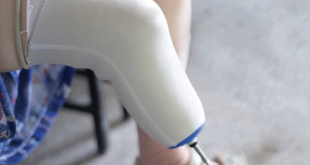Protection from the rays of the Sun, or photo protection, can prevent skin damage caused by ultraviolet radiation. These methods include seeking shade, avoiding sun exposure during peak daylight hours, wearing sun-protective clothing, wearing wide brimmed hat, carrying an umbrella, applying sunscreen, and using sunglasses.
The exposure of the skin to the sun can cause both short-term and long-term changes. In the short term, repeated exposure results in reddening/erythema of the skin, also known as sunburn. The redness is followed by activation of melanocytes, which increases the production of melanin, hence darkening the skin appearance and leading to tanning, or pigmentation.
Long-term effects of repeated exposure include irreversible loss of skin elasticity, leading to premature aging and development of skin cancers. Use of sunscreen is the best method of photo protection, and here are a few facts to know about sunscreen:
What is sunscreen?
These are formulations that are applied onto the skin surface to protect it from the harmful effects of ultraviolet (UV) light.
What are the different types of UV rays?
There are three types of UV radiation: UVC, UVB, and UVA. The ozone layer absorbs 100% of UVC, 90% of UVB, and a minimal amount of UVA. UVA, which can pass through window glass, is associated with aging and pigmentation, while UVB causes sunburn.
What sunscreen should I use?
The American Academy of Dermatology recommends that everyone use sunscreen that offers the following:
• Broad-spectrum protection (protects against UVA and UVB rays)
• SPF 30 or higher
• Water resistance
Besides the use of sunscreen, other methods of sun protection also must be used.
What is SPF?
Sun protection factor (SPF) refers to the ability of the sunscreen to prevent the development of erythema upon exposure to UV radiation.
When should I use sunscreen?
You should apply sunscreen every day on skin not covered by clothing throughout the year, and even on a cloudy day, as up to 80% of the sun’s harmful UV rays can penetrate the clouds. Since UVA passes even through window glass, people with pigmentary disorders like melasma should apply sunscreen indoors, as well.
How much sunscreen should I use, and how often should I apply it?
Apply enough sunscreen to cover all skin not covered by clothing. Sunscreen must be applied to face and neck at a dose of 2 mg/cm2 i.e. two strips of sunscreen are squeezed out on to both the index and middle fingers from the palmar crease to the fingertips. Apply sunscreen to dry skin 15 minutes before going outdoors.When outdoors, reapply sunscreen approximately every two-three hours, or after swimming or sweating.
Do I need to protect myself from visible light from the sun?
Visible light from the sun can worsen skin darkening, also known as hyperpigmentation, particularly for people with darker skin tones. The broad-spectrum sunscreen that says “tinted” on the label and has an SPF of 30 or higher can provide protection against the visible light,
What type of sunscreen should I use?
Ideal sunscreen must have broad-spectrum (UVA and UVB) protection, have an SPF of 30 or higher, and be water-resistant. Available sunscreen options include lotions, creams, gels, sticks, and sprays.
1. Creams are best for dry skin and applying on the face.
2. Gels are good for oily complexions or acne-prone skins.
3. Sticks are good to use around the eyes.
4. Sprays are suitable for hands and feet.
What are the differences between chemical, physical, and tinted sunscreen?
Chemical sunscreens work by absorbing the sun’s rays. They contain one or more of the following active ingredients: oxybenzone, avobenzone, octisalate, octocrylene, homosalate, and octinoxate. These formulations tend to be easier to rub into the skin without leaving a white “cast”.
Physical sunscreens work by reflecting or scattering the light. They contain the active ingredients zinc oxide and/or titanium dioxide. They are used for sensitive skin, but tend to leave cast.
Tinted sunscreens protect the skin from UVA, UVB, and the visible light from the sun, and can help reduce the white “cast” that can be left on the skin from some sunscreens.
Is a high-number SPF better than a low-number one?
Dermatologists recommend using a sunscreen with an SPF of at least 30, which blocks 97% of the sun’s UVB rays. Higher-number SPFs block slightly more of the sun’s UVB rays, but no sunscreen can block 100% of the sun’s UVB rays. It is also important to remember that high-number SPFs last the same amount of time as low-number SPFs. A high-number SPF does not allow you to spend additional time outdoors without reapplication. As many individuals only apply about 20–50% of the amount of sunscreen needed to achieve the amount of SPF, application of high-SPF sunscreens help to compensate for this under-application.
Will using sunscreen limit the amount of vitamin D you get from sun light?
Using sunscreen may decrease skin’s production of vitamin D. However, this can be compensated by getting vitamin D from a healthy diet.
 Medicosnext
Medicosnext




